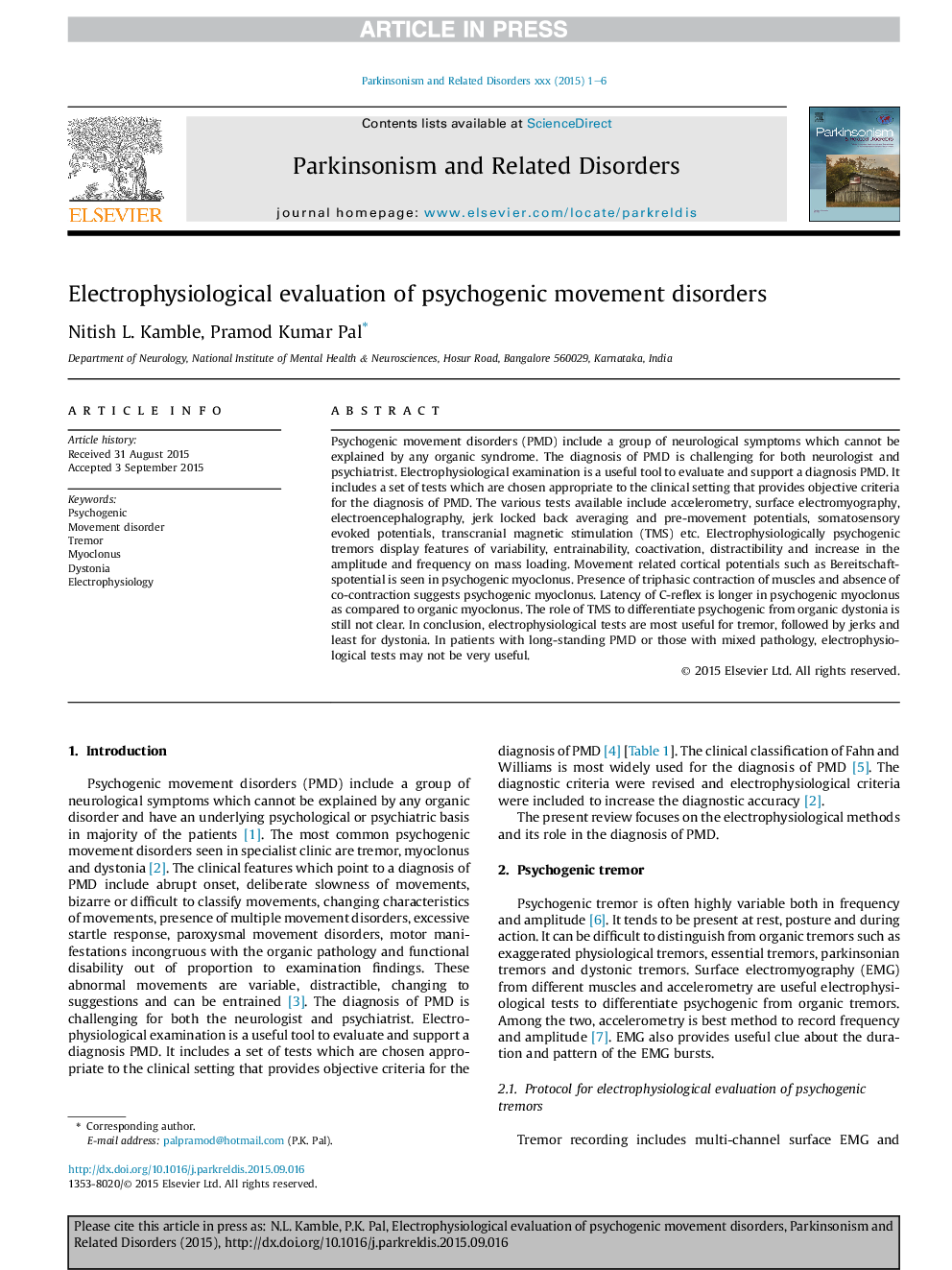| کد مقاله | کد نشریه | سال انتشار | مقاله انگلیسی | نسخه تمام متن |
|---|---|---|---|---|
| 10745106 | 1048706 | 2016 | 6 صفحه PDF | دانلود رایگان |
عنوان انگلیسی مقاله ISI
Electrophysiological evaluation of psychogenic movement disorders
ترجمه فارسی عنوان
ارزیابی الکتروفیزیولوژیک اختلالات حرکتی روانی
دانلود مقاله + سفارش ترجمه
دانلود مقاله ISI انگلیسی
رایگان برای ایرانیان
کلمات کلیدی
روانگردان اختلال حرکتی، ترمور، میوکلونوس، دیستونی، الکتروفیزیولوژی،
موضوعات مرتبط
علوم زیستی و بیوفناوری
بیوشیمی، ژنتیک و زیست شناسی مولکولی
سالمندی
چکیده انگلیسی
Psychogenic movement disorders (PMD) include a group of neurological symptoms which cannot be explained by any organic syndrome. The diagnosis of PMD is challenging for both neurologist and psychiatrist. Electrophysiological examination is a useful tool to evaluate and support a diagnosis PMD. It includes a set of tests which are chosen appropriate to the clinical setting that provides objective criteria for the diagnosis of PMD. The various tests available include accelerometry, surface electromyography, electroencephalography, jerk locked back averaging and pre-movement potentials, somatosensory evoked potentials, transcranial magnetic stimulation (TMS) etc. Electrophysiologically psychogenic tremors display features of variability, entrainability, coactivation, distractibility and increase in the amplitude and frequency on mass loading. Movement related cortical potentials such as Bereitschaftspotential is seen in psychogenic myoclonus. Presence of triphasic contraction of muscles and absence of co-contraction suggests psychogenic myoclonus. Latency of C-reflex is longer in psychogenic myoclonus as compared to organic myoclonus. The role of TMS to differentiate psychogenic from organic dystonia is still not clear. In conclusion, electrophysiological tests are most useful for tremor, followed by jerks and least for dystonia. In patients with long-standing PMD or those with mixed pathology, electrophysiological tests may not be very useful.
ناشر
Database: Elsevier - ScienceDirect (ساینس دایرکت)
Journal: Parkinsonism & Related Disorders - Volume 22, Supplement 1, January 2016, Pages S153-S158
Journal: Parkinsonism & Related Disorders - Volume 22, Supplement 1, January 2016, Pages S153-S158
نویسندگان
Nitish L. Kamble, Pramod Kumar Pal,
